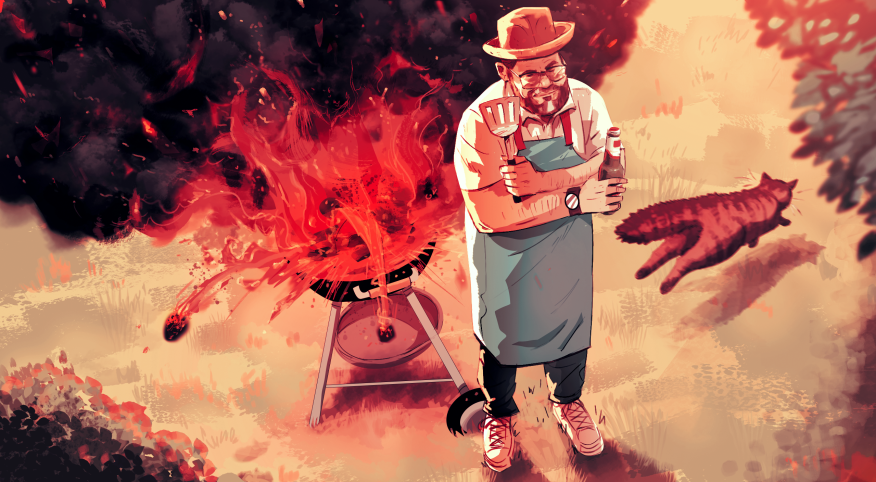There’s no right way to cook a steak. But try telling that to all the Gen X guys gazing at the grill this summer.
When we posed the question to you, on The Arrow’s Facebook page, the majority thought that a well-done steak was “criminal.”
“Anything past medium is ruined,” wrote Thomas Preato Jr. “Stop wasting meat.”
The supporters of well-done steaks, though in the minority, were just as relentless. “I will not eat one spot of blood. Extra well/burnt or it gets trashed,” wrote Timothy Pell. “I’m not a vampire.”
Taste can be a subjective thing. We’re not going to tell anybody they’re wrong about the way they prefer a steak be cooked. But some things are beyond preference. Between well-done and rare, what’s the objectively healthier temperature for a steak? We investigated.
Overcooking zaps the juices and increases chemicals
Overcooking drains the meat of its juices, leaving it dry, tough and nutritionless. The juices themselves aren’t blood, like some people assume, but natural fluids — a mix of water and the protein myoglobin — that give steak its unique flavor and texture.
“Prolonged heat can cause these juices to evaporate or be squeezed out of the meat,” explains Jakob Miller, a professional pitmaster and the owner of Barbecue Pals.
It also means sacrificing all the beneficial vitamins and nutrients contained in those juices, like thiamine (or vitamin B1), which can prevent complications in the brain, nervous system, heart and muscles. Overcooking decreases the amount of thiamine by anywhere from 73 to 100 percent.
In addition, a study appearing in the Journal of the American Dietetic Association confirms that incinerating the juices out of your steak by cooking it at a higher temperature can lead to increased production of glycotoxins, chemical compounds linked to dementia.
The longer your steak cooks, the more germs make themselves at home
Ground meat is loaded with internal bacteria thanks to the grinding process, making it unsafe to eat until its internal temperature reaches 160 degrees. But whole cuts of meat — like steaks or chops — only carry bacteria on the surface. So they doesn’t need to cook as long to zap out those germs.
“There is a common misconception that cooking steak hotter or longer can prevent diseases,” says Miller. “If you cook steak too long in the ‘danger zone,’ though, it can lead to the growth of bacteria.”
The danger zone, according to the USDA, refers to the temperature range — anywhere between 40oF and 140oF — in which bacteria colonies can double in roughly 20 minutes.
“When a steak is cooked well-done, it often requires a longer cooking time, especially if it's a thicker cut,” explains Miller. As the outside of the meat gets charred to safety, the inside takes longer to heat up, meaning bacteria that thrive in those specific temperature ranges, such as E. Coli or salmonella, will continue to grow.
Well-done steak increases the risk of cancer
People who regularly ate well-done meat had nearly twice the risk of bladder cancer, compared with those who preferred meat that’s cooked rare, according to a 2010 study.
“Overcooking meat can lead to the formation of potentially harmful compounds like heterocyclic amines (HCAs) and polycyclic aromatic hydrocarbons (PAHs), which are linked to increased cancer risk,” explains nutritionist Lisa Richards. HCAs are not found in foods other than meats cooked at high temperatures, while PAHs — which are formed by the reaction of the fats and juices dripping onto the grill and producing smoke that rises back up and adheres to the meat — can also be found in cigarette by-products and exhaust fumes.
Lab tests have also shown that HCAs and PAHs contribute to the formation of tumors in the colon, liver, skin, lungs and gastrointestinal tract.
Well-done steak may be a preference, just like a favorite beer or sports team. But if your goal is a long life and a future that doesn’t necessarily involve chemotherapy, it might be worth considering giving medium steaks a try.

Ryan Inzana
Follow Article Topics: Eating-&-Drinking





